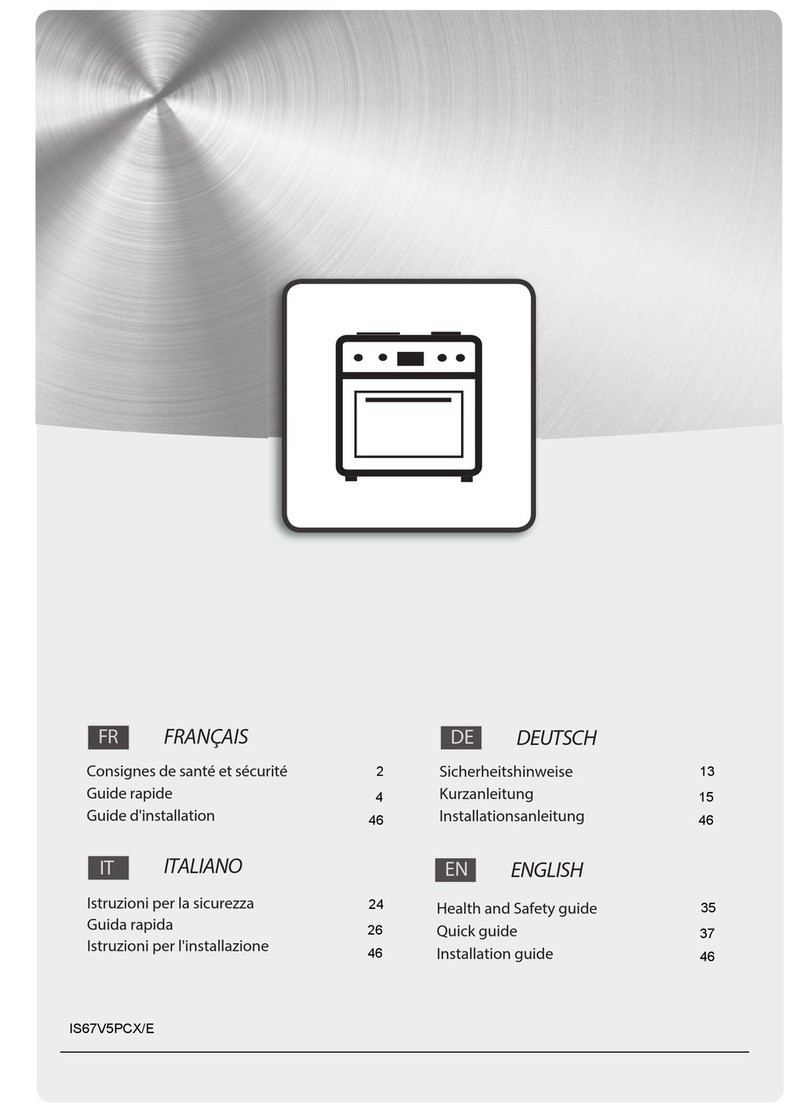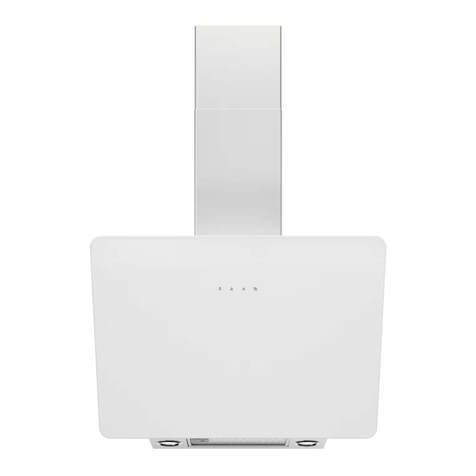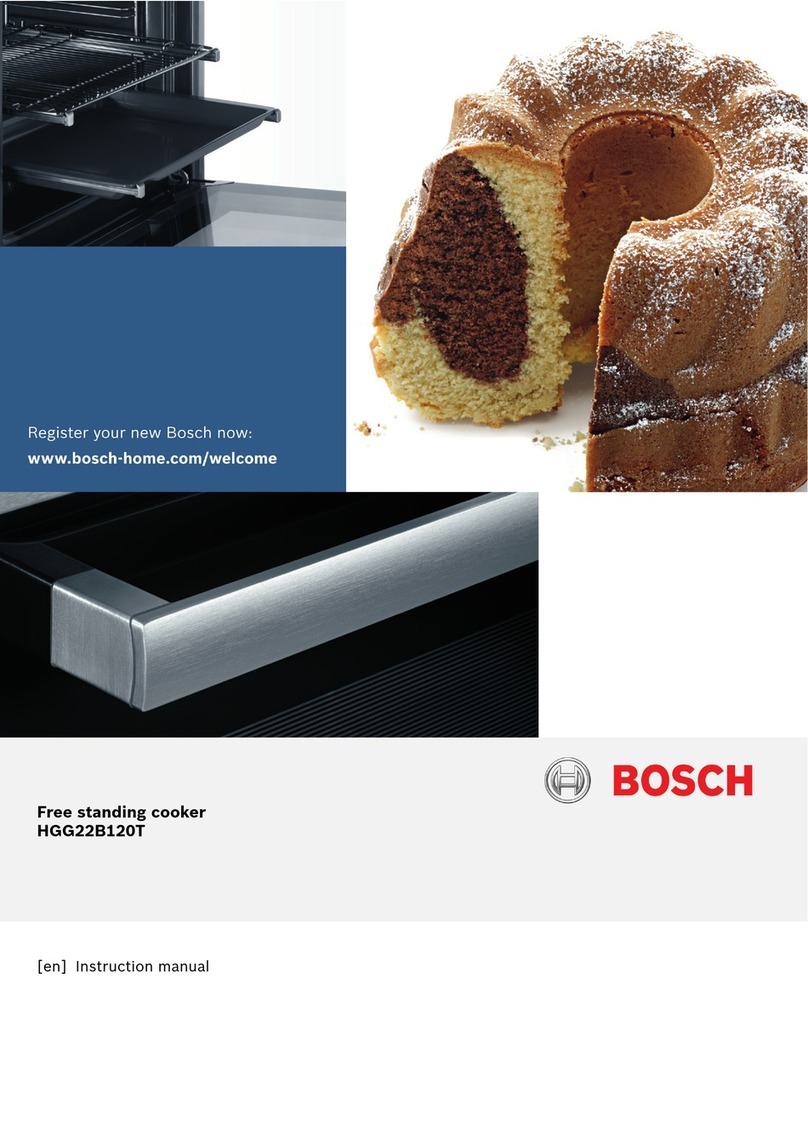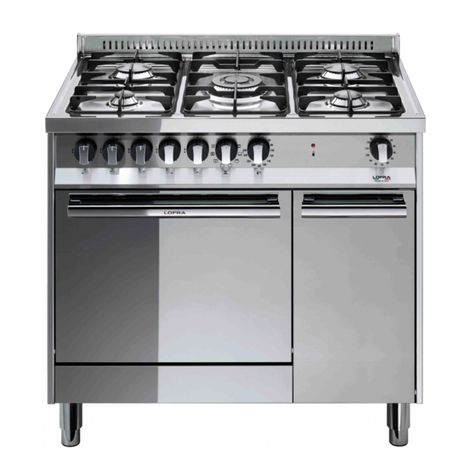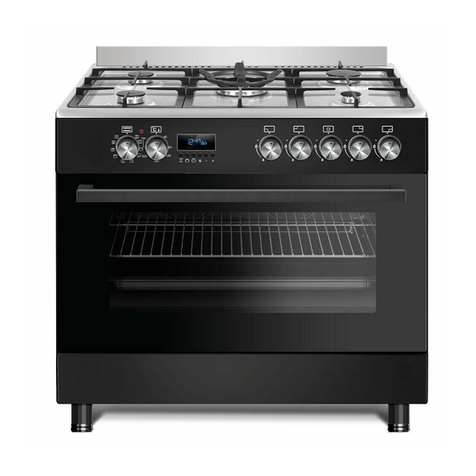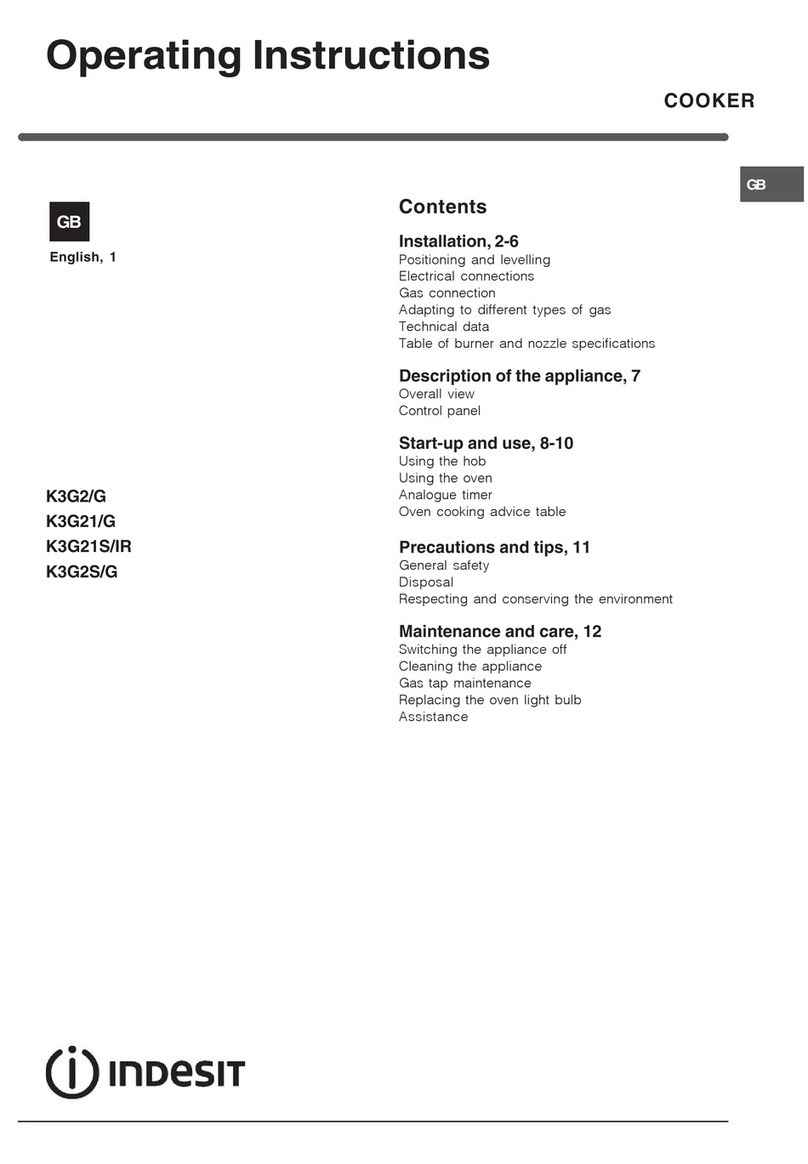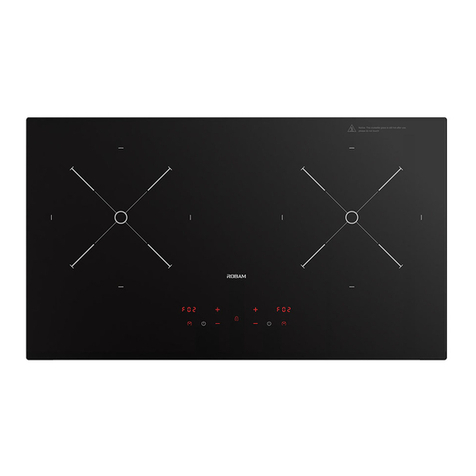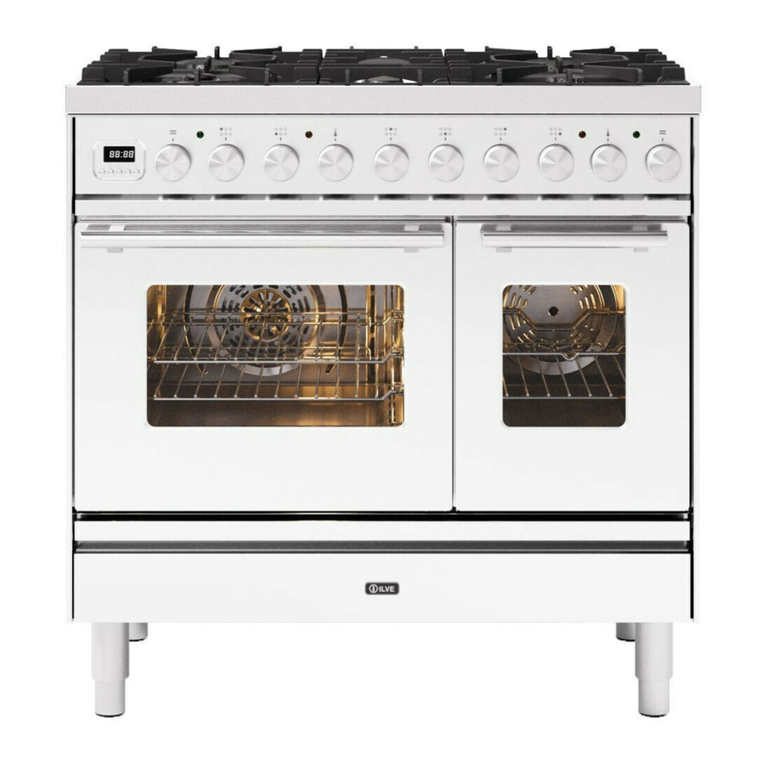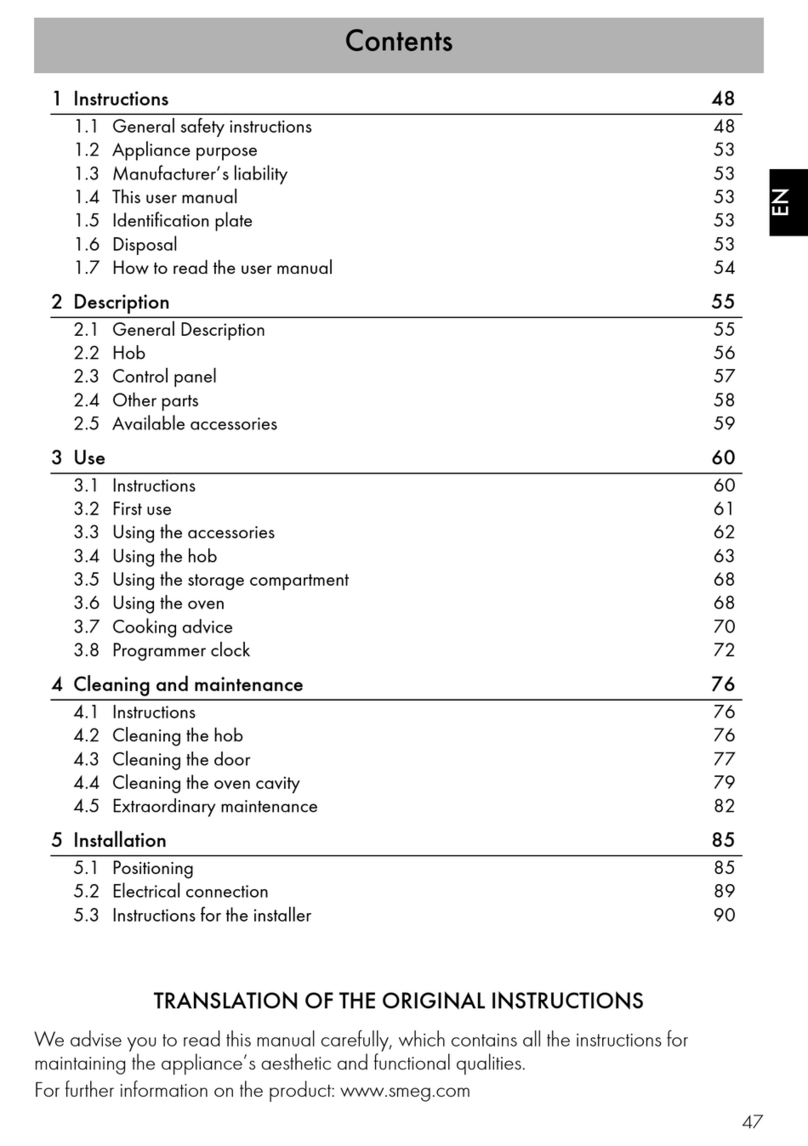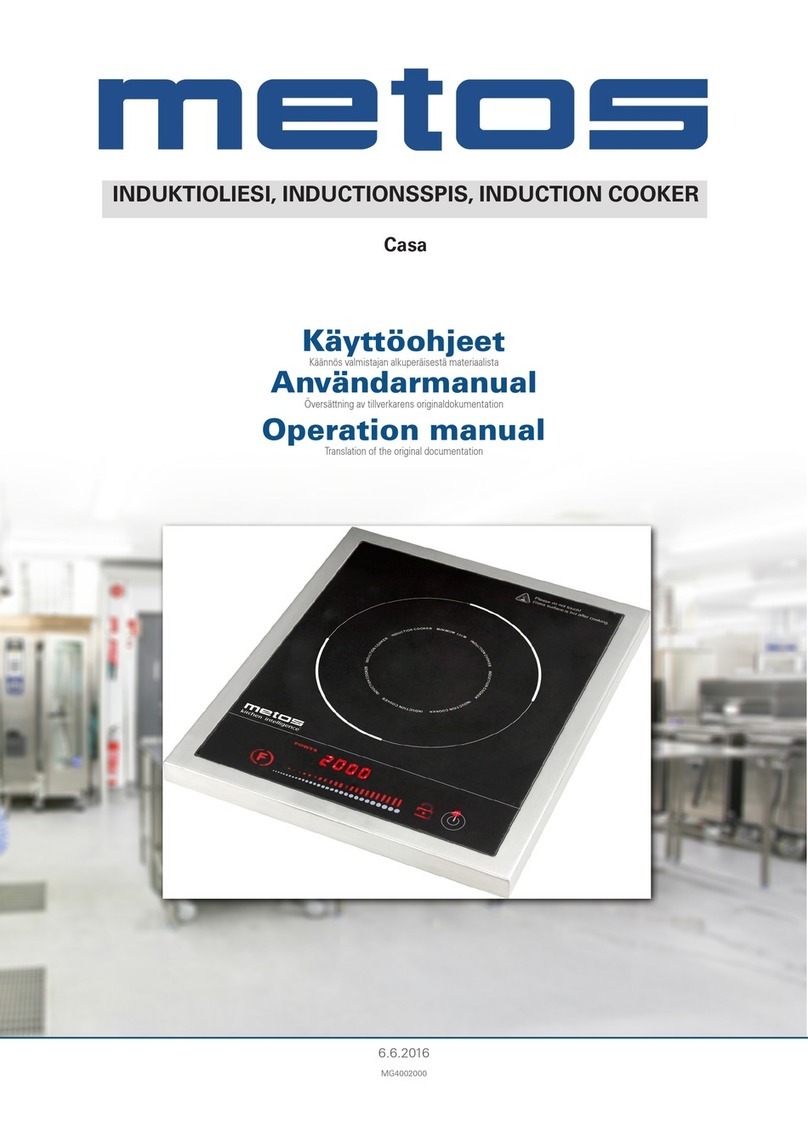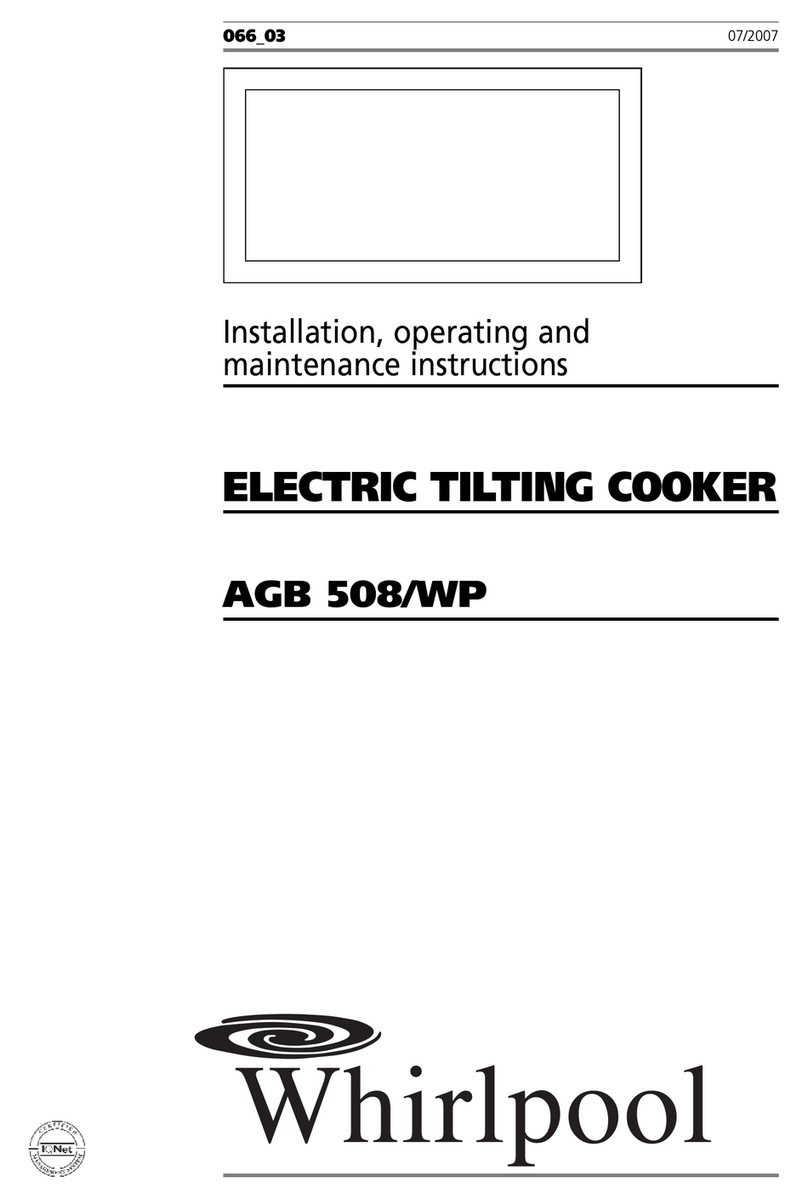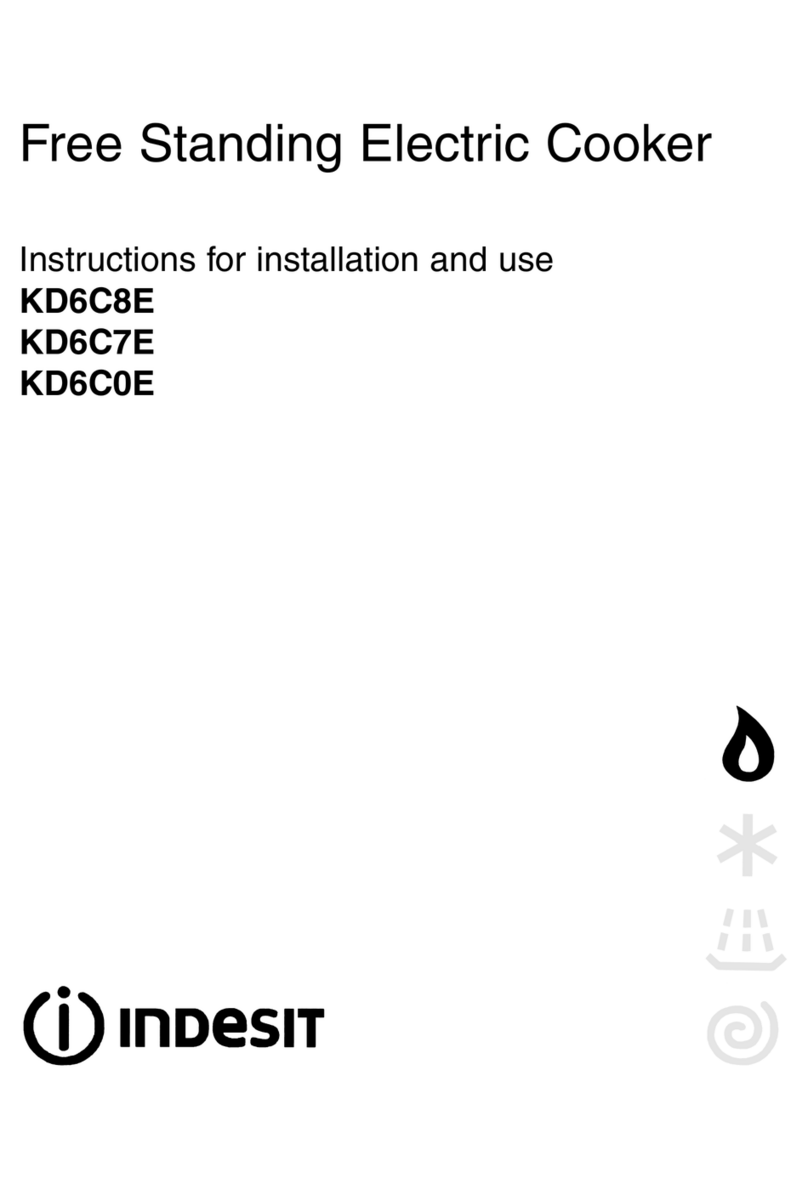spidocook CALDOLUX SCH 030 Instruction manual

OVEN FOR COOK & HOLD FOUR COOK
SCH 030
ENGLISH INSTRUCTION MANUAL AND
TECHNICAL DATAS
07-2018

2
I. INSTRUCTIONS FOR THE INSTALLER
II.
III.
1. DATA PLATE
2. CERTIFICATION
3. INSTALLATION - PRELIMINARY OPERATIONS
3.1 - CHECK OF HTE INSTALLATION LOCATION
3.2 - POSITIONING
3.3 - REMOVAL OF THE PROTECTIVE FILM
4. INSTALLATION - ELECTRICAL CONNECTION
5. REVERSAL OF THE DOOR
INSTRUCTIONS FOR THE USER
1. INSTRUCTION FOR THE OPERATOR
2. NOTES FOR THE USE
3. DIGITAL CONTROL PANEL
3.1 - PREMISES
3.2 - DESCRIPTION AND USE OF THE DIGITAL
3
3
3
3
3
3
3
4
4
5
5
5
6
6
CONTROL PANEL 6
4. MAINTENANCE - CLEANING OF THE APPLIANCE 7
4.1 - FIRST USE OF THE OVEN 7
4.2 - CAVITY CLEANING 7
4.3 - CLEANING OF THE EXTERNAL
PART OF THE OVEN 7
5. TURNING OFF IN CASE OF BREAKING 7
COOKING VARIABLES
1. TEMPERATURE
2. TIME
3. QUANTITY OF FOOD
4. USE OF TRAYS - WIRE GRIDS
IV. MAINTENANCE
1. ORDINARY MAINTENANCE
2. SPECIAL MAINTENANCE
3. MORE FREQUENT BREAKINGS
8
8
8
8
8
8
8
8
9
DIGITAL CONTROL PANEL 10
- TECHNICAL DATA - AT THE END OF THE MANUAL -
ENGLISH
Technical Data
Electrical diagrams
Drawings
See attached le “TECHNICAL
DATA”AT THE END OF THE
MANUAL
ENGLISH

I. INSTRUCTION FOR
THE INSTALLER
Dear Customer, we would like to thank you
and congratulate you on the purchase of one
of the SPIDOCOOK products. The instructions
and suggestions
that follow concern the phases
of a proper installation, as well as the use and
maintenance for your safety and for the best use of
the appliance.
1. DATA PLATE
2. CERTIFICATION
The“CE”brand you nd on the appliances included in
this instructions manual refers to the following directi-
ves:
ELECTRIC STATIC OVENS - SERIE XCH :
- Low Tension Directive DBT 73/23/CEE
e 93/68/CEE, according to rule EN60335-1: 2001
e according to rule EN60335-2-36: 2002
- Electromagnetic Compatibility Directive,
according to rule EN60555-3, EN55014 and
EN55104.
3. INSTALLATION – PRELIMINARY OPERATIONS
All the electrical connections and installations must be
done by qualied personnel according to actual laws.
3.1 CHECK OF THE INSTALLATION LOCATION
Before placing the appliance, please verify the
overall measurements and the exact position of the
electrical connections looking at the pictures on the
attached le“TECHNICAL DATA”.
3.2 POSITIONING
Place the appliance respecting the safety standards
in force that you nd here following described:
1. Place the appliance so that its back and sides
can be easily reached in order to make electrical
connections and provide the needed service.
2. The appliance is not suitable for built-in
installation and side by side positioning.
3. It is suggested to leave a distance of 10 cm.
between the back of the oven and the wall
behind the appliance.
All the models must be placed upon a support, for
example a metal table.
Do not ever install the appliance on the oor.
If the appliance is placed near walls, dividers, kitchen
cabinets, decorated edges, etc., it is recommended
that this be of non combustible material.
Otherwise,theymustbecoatedwith noncombustible
thermal insulating material and you must be very
respectful of the re prevention standards.
3.3. REMOVAL OF THE PROTECTIVE FILM
Carefully remove all the protective lm from the
external walls of the appliance. Pay attention not to
leave any rest of glue on the sides. If there should be
any residue, please remove it with an appropriate
solvent.
ENGLISH 3
R
ENGLISH

4. INSTALLATION – ELETTRICAL CONNECTION
4
a- The connection to the electrical power supply
system must be done according to the standard
in force.
b- Before connecting the appliance, make
yourself sure that the voltage and the frequency
correspond to those stated on the data plate of
the appliance.
c- The appliance must be placed so that the
connection plug to the network can be easily
reached.
d- Place an omni-polar switch between the
appliance and the network. The omni-polar
switch must have the following characteristics:
- must be easily reached after the installation;
- the contacts of the switch must have a minimum
opening distance of 3 mm;
- must have an appropriate input (for example,
magneto-thermal switch.
When the appliance is working the power supply
voltage must not diverge from the value of the
nominal voltage, written on the technical data
plate, by more than ± 10%.
b- The appliance must be connected to the ground
line of the network.
Moreover, the appliance must be included in
equipotential system whose eciency must be
properly checked according to the
current law. This connection must
be done between the dierent
appliances using the terminal
marked with the symbol:
The equipotential conductor must have
a minimum section of 10 mm2.
ENGLISH
5. REVERSAL OF THE DOOR
To meet the customers’ need, the appliance
is equipped with a reversible door. With this
characteristics, the user can choose, at any time, on
which direction he/she wants to open the door.
Needed equipment:
• Medium size screwdriver with Philips driver;
• Small size screwdriver with Slotted driver
Procedure:
1. Disconnect the appliance from the electrical power
supply and wait for the appliance to cool down.
2. Remove eventual trays containing food from the
cavity.
3. Lay the oven on the side so that the fulcrum of
the door is on the top (see following picture).
4. With the screwdriver with Philips driver, unscrew
anticlockwise both the screws that x the stirrup
(see following picture).
ENGLISH

5. Remove the door and lay it on a at surface.
6. With the screwdriver with Slotted driver remove
the cap and the bronze washer from the bottom
of the lid; after this proceed with the reversal of
the door (see following picture).
7. Turn the oven and lay it on the left side
8. Re-assemble the door inserting the hexagon
screws in the bronze kasher.
9. Assemble the stirrup on the bottom of the oven
paying attention to position properly the bronze
washer inside the hole you nd on the stirrup.
10. Fix the stirrup with the two proper screws.
11. Position the oven in the horizontal position and
plug the oven back to the net.
II. INSTRUCTIONS FOR
THE USER
WARNING!
The appliance cannot be cleaned with a jet of water.
Never wash the cavity with acids or aggressive
detergents. Use only water and soap.
The appliance is made for a specic professional use
and must be used by qualied personnel only.
1. INSTRUCTIONS FOR THE OPERATOR
2.
WARNING!
Carefully read this user manual before starting to
operate with the appliance as it gives you important
information regarding safety during installation, use
and maintenance of the appliance itself.
Keep the manual in a safe place where the dierent
operators that work with the appliance can easily
nd and read it.
For any eventual repair, please apply only to
authorized service centres. Always require original
SPIDOCOOK spare parts.
Failure to observe the above suggestions can
compromise safety of the appliance and the
guarantee cannot be recognized anymore.
NOTES FOR THE USE
Premise:
This appliance must be used only in the way in which
it was expressly intended. The ovens were designed
to cook food as here below described. Every other use
is to be considered improper.
The oven allows you to work on temperatures up to
120°C.
The appliance can be used to:
- cook all gastronomy preparations, fresh or
frozen;
- regenerate refrigerated or frozen food.
ENGLISH 5
R
ENGLISH

When placing the food in the cavity, leave at least 10
mm between the trays in order to allow the hot air
to circulate inside the cavity. Please, avoid to put
salt on the food when it is inside the cavity.
3. DIGITAL CONTROL PANEL
3.1
6
3.2
PREMISE
Caldolux is an appliance with two main functions:
- cooking (COOK), during which the food inside
the cavity is cooked;
- holding (HOLD), during which the food already
cooked is held at a constant temperature.
The main function of the electronic panel control
for HOLD is to regulate the temperature inside
the baking chamber by piloting the warming
up element and by modulating the power with a
circuit in TRIAC. The surrounding inside the baking
chamber is static therefore no fan is present.
DESCRIPTION AND USE OF THE CONTROL PANEL
SEE THE IMAGE PAG10
Starting
The lighting and the extinction of the control are
made by pushing the button ON/OFF. When the
control is in state of OFF the relative LED (placed to
the right of the push-button) is lighted in order to
signal the presence of the grid voltage; when the
control comes lighted the LED is extinguished.
Cooking (COOK)
At the lighting, the electronic control goes
in the phase of baking (COOK) and the LED
“TEMPERATURE ROOM” is lighted: it is therefore
possible to set up the temperature in the baking
chamber by acting on the two push-buttons + and
–- (temperature range between 0 - 120 ºC). When
the display indicates a temperature equal to 000,
by pressing the button –- , you go directly to 120
ºC.
Once the temperature in the chamber is set up, you
ENGLISH
must decide between using the core probe or the
time in order to determine the duration of the baking.
Using the core probe , the phase of baking (COOK)
ends when the temperature measured by the core
probe reaches the set up value. Using the time, you
have to set up the wanted duration of the baking in
hours and minutes.
The two functions are mutually exclusive: if the core
probe is used you cannot set up the time and, vice
versa, setting up the time, the core probe cannot be
set up.
By pressing the SELECT button, the LED “ CHAMBER
TEMPERATURE “ goes out and the LED “ CORE
TEMPERATURE“ switches on. The display, in this case,
points out the temperature established for the core
probe. To change the core temperature you have
to act on the buttons + and –- (temperature range
between 0 - 120 ºC).
When the display indicates a temperature equal to
000, by pressing the button –- , you go directly to
120 ºC.
By pressing the SELECT button, the LED “ CORE
TEMPERATURE “ goes out and the LED “ TIME
“ switches on: the display, in this case, shows the
established time.
To establish the time of functioning it is sucient
to act on both buttons + and –- (you have the
possibility to establish the time between 0 hour.01
minutes - 9 hours.59 minutes).
Maintenance (HOLD)
After setting the baking chamber temperature and
the core temperature or the time, by pressing the
SELECT button, the control enters in the maintenance
phase(HOLD) and the LED“ CHAMBER TEMPERATURE
“ related to this phase switches on.
To x the temperature inside the baking chamber,
you have to act on the buttons + and –- (the possible
temperature range is between 0 - 120 ºC). When
the display points out a temperature equal to 000,
by pressing the button - on the display, you pass
directly to 120 ºC.
In this phase of maintenance (HOLD) it is possible
to establish the temperature only inside the baking
chamber, this condition remains unchanged for an
innite time, except a manual extinction of the user
ENGLISH

4.
by using the button STAR / STOP.
After setting the parameters of functioning, you
make the cycle go on by using the START/STOP
button. When the control is in a t state of STARTING
(DEPARTURE), the related LED switches on (put to the
left of the button).
During the functioning of the baking phase (COOK),
they are alternately shown, with a space of 4 “, the
temperature read inside the baking chamber and the
temperature read by the core probe or the remaining
time to end baking (count down), according to the
parameter selected in the positioning phase.
By pressing the SELECT button during this phase, the
established parameters can be shown and can be
possibly changed (the baking chamber temperature
and the core temperature/ time). After 15 “ during
which you press no button to modify, the electronic
control turns to the normal visualization (temperature
read in the chamber and temperature read in heart /
count down ).
During the functioning of the maintenance
phase(HOLD), the temperature read in the baking
chamber is shown.
Cycle Interruption
It is possible to interrupt the baking cycle by pressing
the button START / STOP, at any time. When the
baking cycle is interrupted with the button START
/ STOP, all the established parameters (baking
chamber temperature, core temperature or time) is
put at zero.
MAINTENANCE – OVEN’S CLEANING
WARNING!
All maintenance operations must be done only by
qualied personnel.
Before starting any maintenance operation, you
need to disconnect the appliance from the electrical
power supply and wait for the appliance to cool
down.
4.1
4.2
FIRST USE
Before using the appliance for the rst time it is necessary
to clean up the metal baking chamber with hot water and
soap and then rinse it. Never wash the baking chamber
with acids or aggressive detergents.
it is necessary then to heat the equipment emptied
for about 30 minutes
at approximately 100 ºC, in order to eliminate
eventual smells caused from the thermal isolation.
BAKING CHAMBER CLEANING
It is necessary to clean up the inside of the baking
chamber with suitable products at the end of every
cooking cycle.
In order to clean the appliance it is requested to
follow the following indications:
- To help cleaning, remove the lateral
grids, taking them out from the oven;
- Switch on the oven;
- Set the temperature at about 80°C for about 10
minutes;
- Let the appliance cool down and clean with a
cloth.
Do not use for the cleaning of the steel acids,
aggressive products or products containing chlorine
(sodium hypochlorite, hydrochloric acid etc.), not
even if diluted.
4.3 OVEN EXTERNAL CLEANING
Never use a jet of water in pressure to clean the
external part of the oven. Use wet clothes.
5. TURNING OFF IN CASE OF BREAKDOWN
In case of a breakdown, please :
- deactivate the appliance;
- disconnect the electrical power supply
automatic circuit breaker placed upstream from
the appliance;
- consult a technical assistance center with
trained sta.
ENGLISH 7
R
ENGLISH

III. COOKING VARIABLES
Warning:
a- Before baking, heat empty the appliance on
a temperature higher of about 30°C from the
necessary baking temperature, in order to obtain
the maximum uniformity of baking.
b- A higher temperatures than standard requested
for the product leads to a not uniform baking.
c- Avoid to touch the products put on the pan.
1. TEMPERATURE
The exact setting of the temperature guarantees the
a proper cooking of the food from the inside and the
outside. A lower temperature than the proper one
dries the food rather than cook it.
A higher temperature than the proper one burns the
surface and the inside remains uncooked ( sometimes
this is desired, especially for meat cooking).
2. TIME
3.
This variable depends a lot on the quantity of food
put in the oven. A bigger quantity of food needs a
longer cooking time and vice versa.
Shorter times than the proper ones do not allow the
complete cooking of the food.
Longer times than the proper ones cause the burning
of the food surface.
FOOD QUANTITY
The quantity of food aects the cooking time.
A bigger quantity of food needs a longer cooking
time and vice versa.
4. USE OF PANS AND GRIDS
It is recommended to use :
- Stainless steel pans : rst courses, meat, sh and
potatoes.
- Grids: meat to be browned like steaks, hot dogs,
sausage, frozen bread and frozen pizza.
8ENGLISH
IV. MAINNANCE
1.
2.
ORDINARY MAINTENANCE
All the maintenance operations must be done only by
qualied sta.
Before starting any maintenance operation, you have
to disconnected the appliance from the electric power
supply and wait for the appliance to cool down.
The appliance must be regularly controlled at least
once a year. A specialized technician has to control
the complete machine.
SPECIAL MAINTENANCE
All the maintenance operations must be done only by
qualied sta.
Before starting any maintenance operation, you
should disconnect the appliance from the electric
power supply and wait for the appliance to cool
down.
- The parts that need special maintenance can
be reached by removing the front control panel
and the back of the oven.
ENGLISH

ENGLISH
3. MORE FREQUENT BREAKINGS
R
ENGLISH 9
BREAKDOWN CAUSE SOLUTION
The oven is completely turned o
The tension of the electrical system is
missing Restore the tension
Intervention of one of the fuses of the
power board Replacement of the fuse
The connection to the electric system
not made in the correct way
Control the connection of the
appliance to the electric system
The oven does not warm up well
even if the temperature and the
time were established and the key
STARTING /
STOP was pressed
Safety thermostat intervention
the thermostat of safety has an
automatic rearmament:
You must wait for some minutes so
that the temperature of the oven goes
down and the thermostat reequips
Damaged resistance Contact a specialized technician for
reparation
Damaged electronic control Contact a specialized technician for
reparation
On the temperature display you can
read S01
The wires that connect the temperature
(chamber) probe are not connected to
the power board
Control the connection
Damaged chamber probe Contact a specialized technician for
reparation
Damaged electronic control Contact a specialized technician for
reparation
On the temperature display you can
read S02
The wires that connect the core
temperature probe are not connected to
the power board
Control the connection
Damaged core temperature probe Contact a specialized technician for
reparation
Damaged electronic control Contact a specialized technician for
reparation
Even with the door closed water
goes out across the gasket
Damaged door gasket Contact a specialized technician for
reparation
Damaged magnetic closing system
Screw on magnets in clockwise sense
per hour by paying attention not to
damage them

LED indicating the chamber
temperature during the baking
Digital Display
LED indicating the
chamber temperature during
the maintenance
LED indicating
the time Button to select the
modality
Button and LED for
START/STOP
Button and LED for
switching on
10 ENGLISH
DIGITAL CONTROL PANEL
LED indicating the product’s
core temperature
ENGLISH
Button to reduce the
established data
Button to increase the
established data

R
ENGLISH
NOTES:
ENGLISH 11

ENGLISH
ELECTRICAL POWER
FREQUENCY
POWER SUPPLY CABLE TYPE
POWER SUPPLY CABLE EXTERNAL
Ø VOLTAGE / CABLE SECTION
MAX FOOD LOAD
NOISE LEVEL
TECHNICAL DATA
kW 0,76
50 Hz
H07RNF 10 ÷ 16 mm
230 V~ 3G x 1,5 mm2
Kg 15
<70 db (A)
SCH 030
07-2018
TECHNICAL DATA

Spazio etichetta
-*"%
Table of contents
